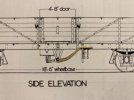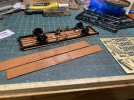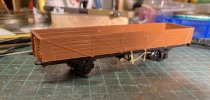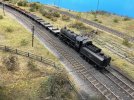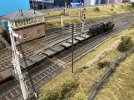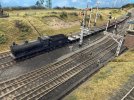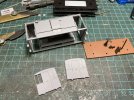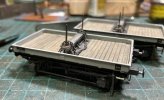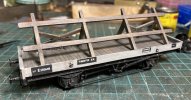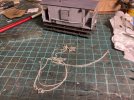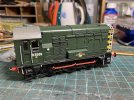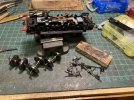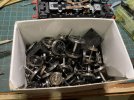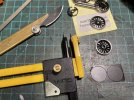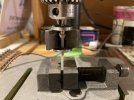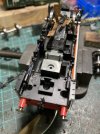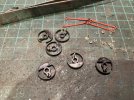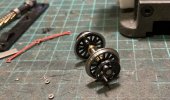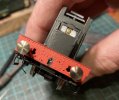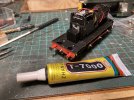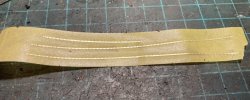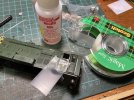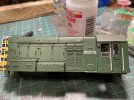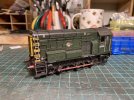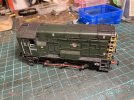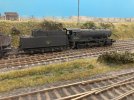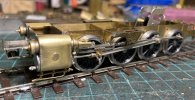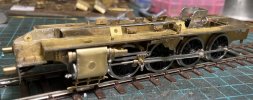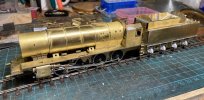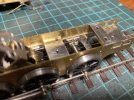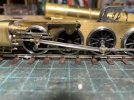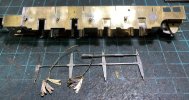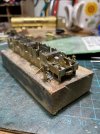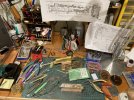Gadgie
Western Thunderer
I’ve decided to start a workbench thread, having lurked on here for a while and having seen the images vanish from my RMweb thread. To get started, here’s a picture of the (rather untidy) bench itself.

Like many houses in Sheffield we have a cellar, and it’s great to have a dedicated space for modelling.
I’m part of the group that has built a model of South Pelaw junction, which was on the steeply graded Tyne Dock - Consett route in County Durham. There is a dedicated RMweb thread, and some images have survived the RMweb meltdown — South Pelaw and Stella Gill EM. Our main emphasis is on big freight engines and wagons, lots and lots of wagons. We’re going to be at Expo EM in Bracknell in a few weeks time — first show for two and a half years! — there’s a few things to fix, which give a flavour of the kind of thing that passes across the bench.
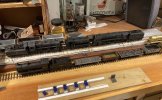
At the back are mineral wagons in various stages of completion. Then we have 43126 (replacement DCC chip), 68038 (crew), and 92061 (minor repair). In front we have 65871 (weathering), one of 3 Dave Bradwell J27s on South Pelaw, and some wagons in need of couplings and other detail. Sneaking in on the right is a Dave Bradwell WD, destined to be 90016 — like most of his kits, a joy to build but rather time consuming.
The eagle eyed might have noticed a Tube wagon under construction. We know that one of the traffics through South Pelaw was colliery arches, supplied by Raines of Derwenthaugh, and transported in Tube and Pipe wagons. I have a rough idea of what these arches might look like and how to make some, but does anyone know dimensions, whether they would be painted, or even if they would be covered?
Richard
—

Like many houses in Sheffield we have a cellar, and it’s great to have a dedicated space for modelling.
I’m part of the group that has built a model of South Pelaw junction, which was on the steeply graded Tyne Dock - Consett route in County Durham. There is a dedicated RMweb thread, and some images have survived the RMweb meltdown — South Pelaw and Stella Gill EM. Our main emphasis is on big freight engines and wagons, lots and lots of wagons. We’re going to be at Expo EM in Bracknell in a few weeks time — first show for two and a half years! — there’s a few things to fix, which give a flavour of the kind of thing that passes across the bench.

At the back are mineral wagons in various stages of completion. Then we have 43126 (replacement DCC chip), 68038 (crew), and 92061 (minor repair). In front we have 65871 (weathering), one of 3 Dave Bradwell J27s on South Pelaw, and some wagons in need of couplings and other detail. Sneaking in on the right is a Dave Bradwell WD, destined to be 90016 — like most of his kits, a joy to build but rather time consuming.
The eagle eyed might have noticed a Tube wagon under construction. We know that one of the traffics through South Pelaw was colliery arches, supplied by Raines of Derwenthaugh, and transported in Tube and Pipe wagons. I have a rough idea of what these arches might look like and how to make some, but does anyone know dimensions, whether they would be painted, or even if they would be covered?
Richard
—


